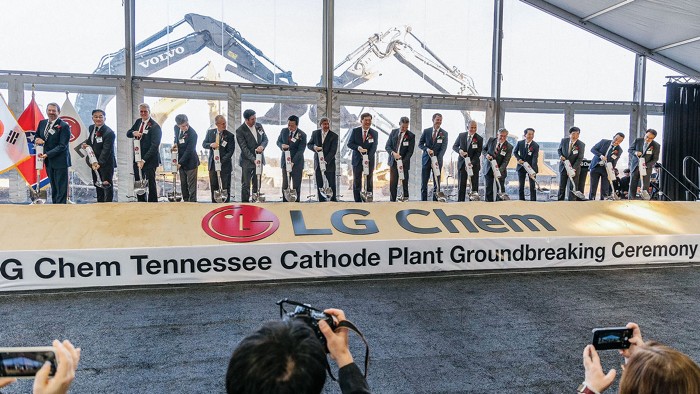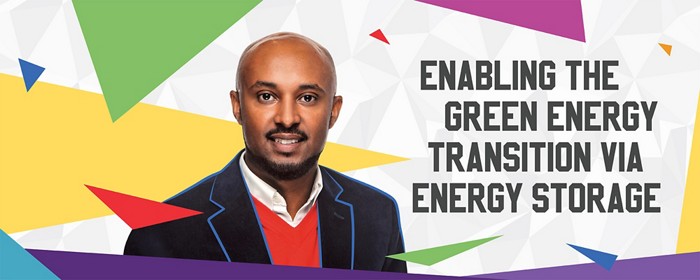Advertisement
Grab your lab coat. Let's get started
Welcome!
Welcome!
Create an account below to get 6 C&EN articles per month, receive newsletters and more - all free.
It seems this is your first time logging in online. Please enter the following information to continue.
As an ACS member you automatically get access to this site. All we need is few more details to create your reading experience.
Not you? Sign in with a different account.
Not you? Sign in with a different account.
ERROR 1
ERROR 1
ERROR 2
ERROR 2
ERROR 2
ERROR 2
ERROR 2
Password and Confirm password must match.
If you have an ACS member number, please enter it here so we can link this account to your membership. (optional)
ERROR 2
ACS values your privacy. By submitting your information, you are gaining access to C&EN and subscribing to our weekly newsletter. We use the information you provide to make your reading experience better, and we will never sell your data to third party members.
Energy Storage
Group14, SES, and Factorial pursue high-energy batteries
With funding and partners, start-ups tackle anode, electrolyte chemistries
by Melody M. Bomgardner
April 21, 2021
| A version of this story appeared in
Volume 99, Issue 15

Three start-ups have announced production and financing achievements for new materials they say will significantly raise the energy density of lithium-based electric-vehicle batteries.
The companies—Group14 Technologies, SES, and Factorial Energy—tout recipes that use high-energy anodes in place of traditional ones made from graphite. Graphite anodes are highly conductive and stable but limit the amount of energy that can be stored in a battery cell. Making cheaper batteries or extending the range of electric vehicles requires next-generation anodes and electrolytes.
Group14 has opened a commercial-scale facility in Woodinville, Washington, to make its nanocomposite of carbon and silicon, which includes open spaces where the silicon can expand as it absorbs lithium ions. The firm says battery makers are working to validate the composite. It plans to open a second factory this year at partner REC Silicon’s facility site in Moses Lake, Washington.
Meanwhile, SES and Factorial have raised funds from investors to speed commercialization of batteries containing lithium-metal anodes.
SES, a Massachusetts Institute of Technology spin-off, has raised $139 million from investors, including General Motors. SES, formerly called SolidEnergy Systems, previously had plans to make solid-state batteries. It now says it will use a liquid, highly concentrated salt electrolyte. SES and GM plan to build a prototyping line in Woburn, Massachusetts, by 2023.
The choice of electrolyte determines the safety and cycle life of cells with lithium-metal anodes, points out K. M. Abraham, principal of the battery consulting firm E-KEM Sciences.
Batteries with lithium-metal anodes are promising because of their high theoretical capacity, but the anodes are prone to build up of dendrites that cause the battery to fail, sometimes catastrophically. Solid electrolytes are thought to be safer and make for longer-life batteries, but they are slow to transport lithium ions, resulting in low power output. “No one has come out with a practical battery yet,” Abraham cautions.
Factorial Energy, founded by Cornell University chemistry professor Héctor Abruña, says it has found the right balance with a powerful battery that combines a solid-state electrolyte with a lithium-metal anode. Factorial emerged from stealth this week with $40 million in funding from backers including Mark Fields, the former CEO of Ford Motor.




Join the conversation
Contact the reporter
Submit a Letter to the Editor for publication
Engage with us on Twitter